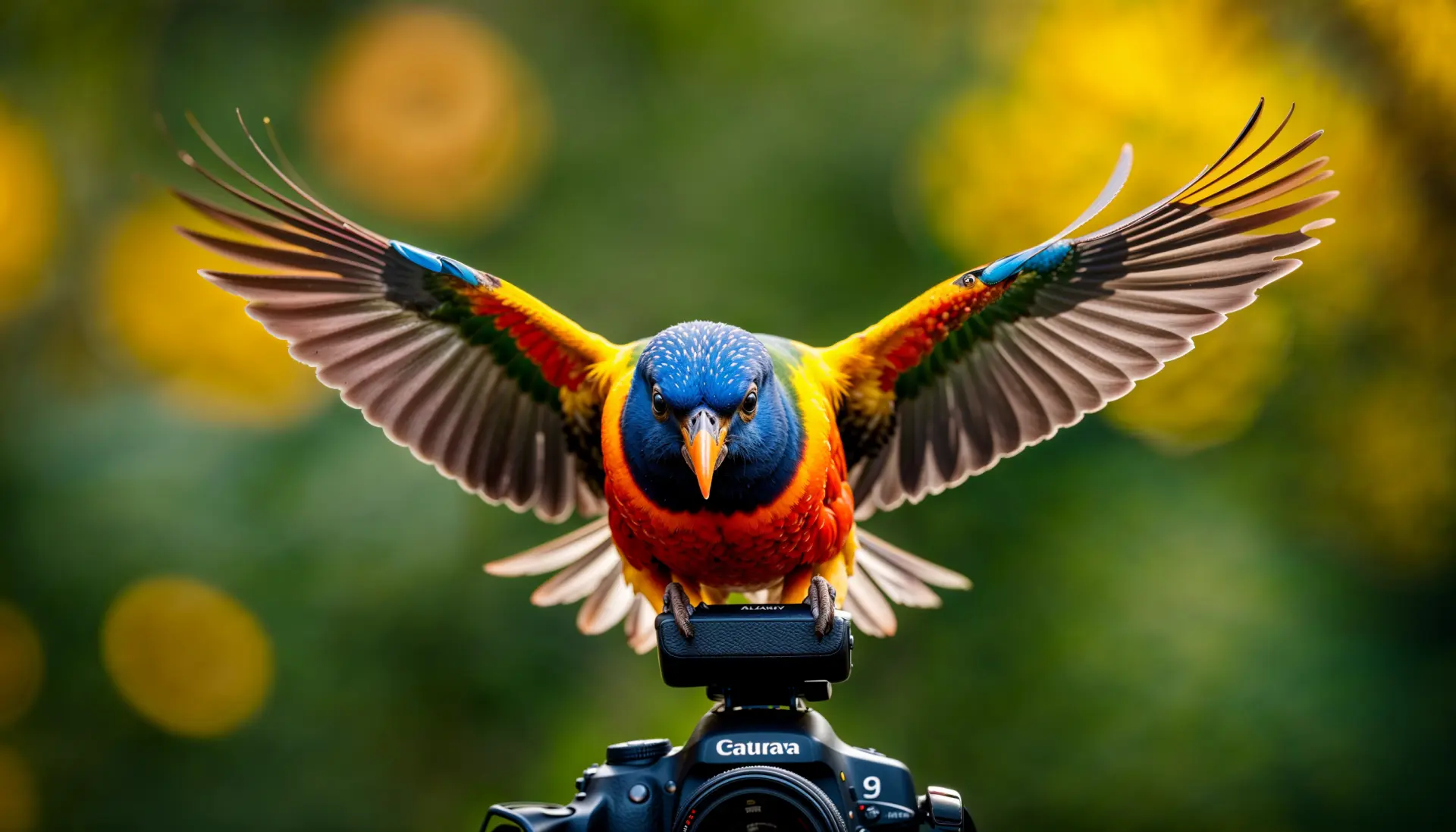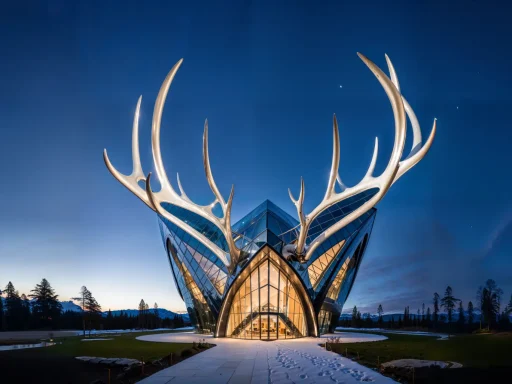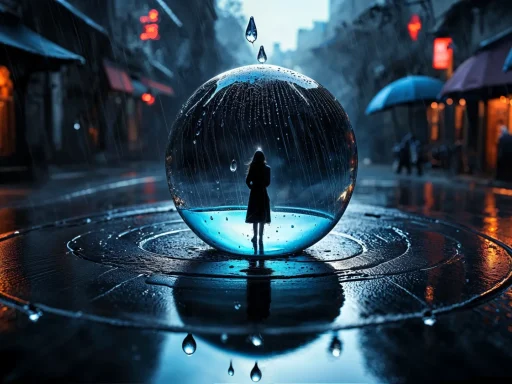Picture this: You’re creating an image of a suspenseful scene where the subject stumbles upon a secret door. What camera angle would you choose to create drama and suspense and make it impactful? Keep that scene in mind because by the end of this guide you’ll know the ideal angle for this image. But not only that – you’ll also know how to create this angle with the help of Tegr.ai.
In a previous discussion, we explored shot distances and camera angles. If you haven’t read that foundational article yet, I highly recommend checking it out to understand the basic concepts before getting into today’s topic. This time, we wanted to focus more on this complex topic because it’s a technique that can really elevate you AI art if used wisely.
Want your subject to look powerful? Use low angle. Want them to seem small and vulnerable? Use high angle or worm’s eye view. You want to create a feeling of tension, or unease? Dutch angle is the answer. It’s like a magic tool in your hands!
We’ll see how to achieve the most commonly used camera angles. This way, Tengr.ai can be your super-smart help in creating impactful images. With Tengr.ai, you can master the best angles without using a physical camera. What’s more, understanding the emotional impact of each angle will help you evoke certain emotions with your images. These techniques, long used in the film industry, are now applicable in AI-generated art as well.
The Basics of Camera Angles
Simply put, camera angles are the positions from which the camera captures the subject. But don’t let this simplicity fool you—it’s more important than you would think at first. It’s one of the most important aspects in storytelling.
Photographers, as well as digital artists use camera angles to tell a story without words. The narrative and perspective of your image can totally change depending on how and where you position your camera.
Camera angles are the secret weapon to:
- Create and influence emotions (for instance by making the subject look vulnerable or powerful).
- Set the mood (such as tension, drama, unease).
- Highlight important details by guiding the viewer’s attention.
- Enhance the narrative aspect.
If you learn to use this knowledge to your advantage, you can evoke certain emotions with your images.
Tip: Sometimes, you need to describe camera angles more precisely so that Tengr.ai can understand exactly what you’re looking for. If the result doesn’t meet your expectations, continue refining and adjusting your prompt until you get it right.

Types of Camera Angles
1. Eye Level Shot
This type of shot shows things from a “natural” angle, just like we normally see them. The camera is positioned at the same height as the subject’s eyes. It’s the most common choice for natural portraits, the most common in film and photography because it’s the most neutral and natural angle. It’s the best choice for when you want your audience to feel connected and closer to the subject. It gives a relatable, personal, intimate feeling and a sense of equality.
To put it simply, it’s the right angle for engaging the audience, and make them feel like they’re looking right in the subject’s eyes.
Let’s see some examples:
Prompt: “(Eye-level shot), hyper-realistic portrait of the most beautiful, gorgeous Native American woman, tattoo art, simple braided hair, soft backlighting, misty, dark atmosphere, ethereal fog, mist, cinematic composition.“


“Close-up, eye-level photograph of a cute adorable red panda, capturing the playful expression on its face, sitting on a bamboo tree, misty forest background,
(shallow depth of field), award-winning nature photography.“

“Eye-level shot, award-winning nature photography, adorable little Axolotl, close-up, shallow depth of field.”


2. Low-Angle Shot
The low-angle shot is the perfect choice for when you want your subject to appear more powerful or intimidating. In this setup, the camera is positioned below the subject and tilted upwards. This position makes the subject seem larger, stronger, and more dominating. It’s the best choice when you want to emphasize the size and importance of the subject.
Plus, it’s perfect for creating a sense of superiority or amazement towards the subject. It’s widely used in the film industry for narrative and emotional purposes.
“Low-angle shot of a mountain climber standing triumphantly on a peak, holding an ice axe aloft with the sky as the backdrop.”


It works particularly well with buildings, making them appear taller and more impressive:
“(Low-angle shot), (exquisite architecture), imposing Art Deco skyscraper, set against a moody, cloudy sky, viewed from a low angle to emphasize its towering height and architectural grandeur. Intricately designed building, awe-striking architectural design,
sleek lines.“
“Night-time, low-angle, imposing photograph of the Eiffel Tower, captured in a sleek and elegant way.“
Or even as simple as: “Low-angle, exquisite architecture photography.“



It’s also ideal for capturing the majestic appearance of a majestic male lion.
“Low-angle shot, award-winning National Geographic photograph of a majestic alpha male lion atop a rocky outcrop, low angle view amplifying its regal and predatory nature.“



“(Low-angle shot), award-winning photograph, hyper-realistic portrait of a beautiful, gorgeous Native American woman, adorned in vibrant traditional Native American attire, tattoo art, simple braided hair. She is (captured from a low angle) to enhance her feeling of dominance and confidence. Soft backlighting, misty, dark atmosphere, ethereal fog, hyper-detailed.“






“Low-angle shot, futuristic mecha-samurai, gleaming in chrome and neon, (viewed from below) as it stands guard over a cyberpunk cityscape.“
“Low-angle shot of a Valkyrie warrior descending from storm clouds, winged helmet and gleaming spear, shot from below to emphasize her divine authority.”


3. High-Angle Shot
This technique does exactly the opposite of what a low-angle shot does. This means that instead of making your subject look powerful and dominant, it actually makes them appear smaller and more vulnerable. This can be a very clever tool when you want to tell a certain kind of story.
Think about it – when the camera is looking down on someone or something, it naturally creates the feeling of the subject being weaker or inferior. It’s as if we, the viewers, are somehow detached from what’s happening, and we’re only observers watching from above. But that’s not all—it can also give a broad perspective of a scene, or it can capture the relationship between the subject and their environment. It’s amazing how much effect can a camera angle have on the image.
Now, let’s see this camera angle in action:
“High-angle shot of a colorful Moroccan market (seen from a high angle).”

“High-angle shot of a solitary polar bear standing on a shrinking ice-cap, (viewed from above), in the Arctic ocean, high angle view highlighting vulnerability.

An artist or an artist-robot: “High-angle shot of an artist/robot in a cluttered studio, focused on a canvas, with the scene captured from above to showcase the creative chaos and the concentration of the artist.“


“High-angle shot, a mysterious adventurer navigates through a temple’s courtyard. (Camera positioned right above his head). He appears vulnerable.”

“Hyperrealistic portrait of a beautiful, gorgeous Native American woman, (high-angle shot), (viewed from above, feeling of one-with-nature). She is adorned in vibrant traditional Native American attire, tattoo art, simple braided hair. Soft backlighting, misty, dark atmosphere, ethereal fog, hyper-detailed.”



4. Worm’s-Eye View
This is an extremely low angle, looking straight up. It’s an unusual but captivating perspective that creates a sense of grandeur, wonder, or disorientation similar to the feeling we get when looking up at a towering skyscraper or a tall tree for example. So the camera is positioned very low, practically on the ground, looking right up at the subject. This perspective makes the subject appear towering, dominant, or even imposing. It’s an excellent angle for when you want to emphasize the height or power of you subject. Think of it as a child’s viewpoint, where everything seems intimidatingly large or tall.

“(Worm’s-Eye-View perspective), (shot from extremely low, upwards) of a beautiful cherry blossom tree, hyper-detailed, award-winning photography, dizzying height.“


“(Worm’s-Eye View perspective), (shot from an extremely low angle, upwards), dizzying ground-level shot of futuristic skyscrapers converging towards a single point.“


5. Bird’s Eye View (Overhead Shot/Elevated Shot)
This angle is achieved by placing the camera above the subject, looking straight down. It’s the opposite of a worm’s-eye view shot. This one is excellent for showing patterns and for showing scale. As the image is captured from high above, it gives an even more detached feeling than the high-angle shot. At the same time, it gives a complete overview of the environment or the scene.
“(Bird’s-eye-view photograph) of a hyper-realistic adorable fluffy little kitten sitting in a pile of autumn leaves, looking straight up with its beautifully detailed eyes, (captured from above its head), vibrant colors, mesmerizing eyes.”


“Bird’s-eye-view shot of a winding river cutting through a dense forest in autumn, viewed from straight above. The changing colors of the trees create a vivid palette of red, orange, and yellow, which beautifully contrasts with the deep blue of the river.”


“(Elevated shot), with the camera directly above, looking straight down onto a quaint mountain village blanketed in snow, as the golden hues of dusk settle over the rooftops.“


“(Overhead shot), hyper-realistic photograph of a beautiful Native-American woman looking up into the camera, adorned in traditional Native American attire, simple braided hair.“


6. Dutch Angle (Tilted Angle)
The Dutch or tilted angle creates a sense of tension and suspense, similar to what you might see in thriller or horror movies. You can mimic this unsettling effect with Tengr.ai by using the Dutch angle or tilted angle. With this technique you can create an unbalanced perspective that makes viewers feel unsettled or tense. Also, the Dutch angle is a great choice for creating dynamic images.
“(Dutch Angle shot), tilted camera angle, a suspenseful moment in a dimly lit alleyway, viewed through a Dutch angle to heighten the tension, featuring a lone figure casting a long shadow under flickering street lamp, with graffiti-covered walls adding to the scene’s edginess.“

“(Dutch-angle shot), (camera held at an angle), dutch angle at 30 degree, tilted camera perspective of a medieval battle scene, intense action, hyper-realistic, cinematic composition.“

“(Dutch Angle shot) of a skyscraper-lined street viewed at a dramatic angle, and a lone figure in a business suit. The sky is an unnatural gradient from dark blue to sickly green. Modernist architecture. Surreal color palette. Tense atmosphere.”

Next, let’s see a really fun technique:
7. Fish-Eye Lens Shot
This type of shot is captured using an ultra-wide-angle lens in photography. It creates a distinctive panoramic view with a noticeable visual distortion. This effect works well for panoramic scenes. It can add a surreal, dramatic, or even psychedelic effect to images. Tengr.ai lets you experiment with this fun and unique perspective.
“Curious dog’s snout investigating the camera, fish eye perspective creating a whimsical, distorted view of its inquisitive face, (Fish-Eye-Lens Shot).”




“(Fish-Eye-Lens effect:2), (strong circular fish-eye-lens distortion), panoramic shot in a misty forest, portrait of a beautiful (Native-American woman), award-winning photograph.“


“(Fish-Eye-Lens Shot) of an alien using a fish-eye lens to take a selfie with famous Earth landmarks. The shot shows the alien, with its eyes and tentacles, looking into the camera with the Eiffel Tower in the background.”

8. First-Person View/Point of View (POV) Shot
This perspective shows us the scene through the eyes of the subject, seen exactly as they would see it, often including details such as their hands or feet in the frame. This creates an immediate connection with viewers by placing them in the subject’s position. In Tengr.ai you can simulate the visual perspective of your subject, making the images more immersive and engaging.
“(Point-of-View shot) of an intricate bouquet (seen from the florist’s perspective), hands slightly visible while arranging the bouquet, colorful blooms surrounding the workspace, showing the delicate artistry involved.“

“(Point of View shot), the breathtaking view from a mountaintop, (seen through the eyes of a hiker), with the vast landscape stretching out below, conveying a sense of achievement and awe.“

9. Aerial View
While the bird’s-eye-view shot or overhead shot is captured from above the subject, looking straight down, an aerial shot provides a wider view of the scene from an angle. It is frequently used in film and TV to show ‘the big picture’, typically captured from a helicopter or drone. Now, with Tengr.ai, you can recreate this effect for landscapes, cityscapes, or complex scenes to add context.
“An aerial view of a bustling autumn festival in a small town, capturing the vibrant colors of the fall foliage and the festive decorations, with people milling about booths and children playing.“

“An aerial shot of mysterious ancient ruins hidden in a jungle, with partially uncovered stone structures peeking through thick vegetation, hinting at a lost civilization and untold stories.“

“Aerial view, shot from a drone or helicopter, of lavender fields at sunset, seen from above, the orderly rows creating a mesmerizing geometric pattern, golden hour lighting, intricate details, vivid, bright colors.”

“Aerial shot from a drone, view of a snowy mountain resort from above, mesmerizing landscape.“


Final Words
As we’ve explored in today’s post and seen through lots of examples, camera angles do more than just frame a shot—they tell stories without words and create emotional impact. By understanding these techniques, you can transform simple images into captivating stories.
So, why not experiment with different angles in your next project? Choosing the right angle for your Tengr.ai images can make all the difference. Use these storytelling tools to create amazing images. Also, don’t forget to share your creations with other enthusiasts on social media to inspire and be inspired.





